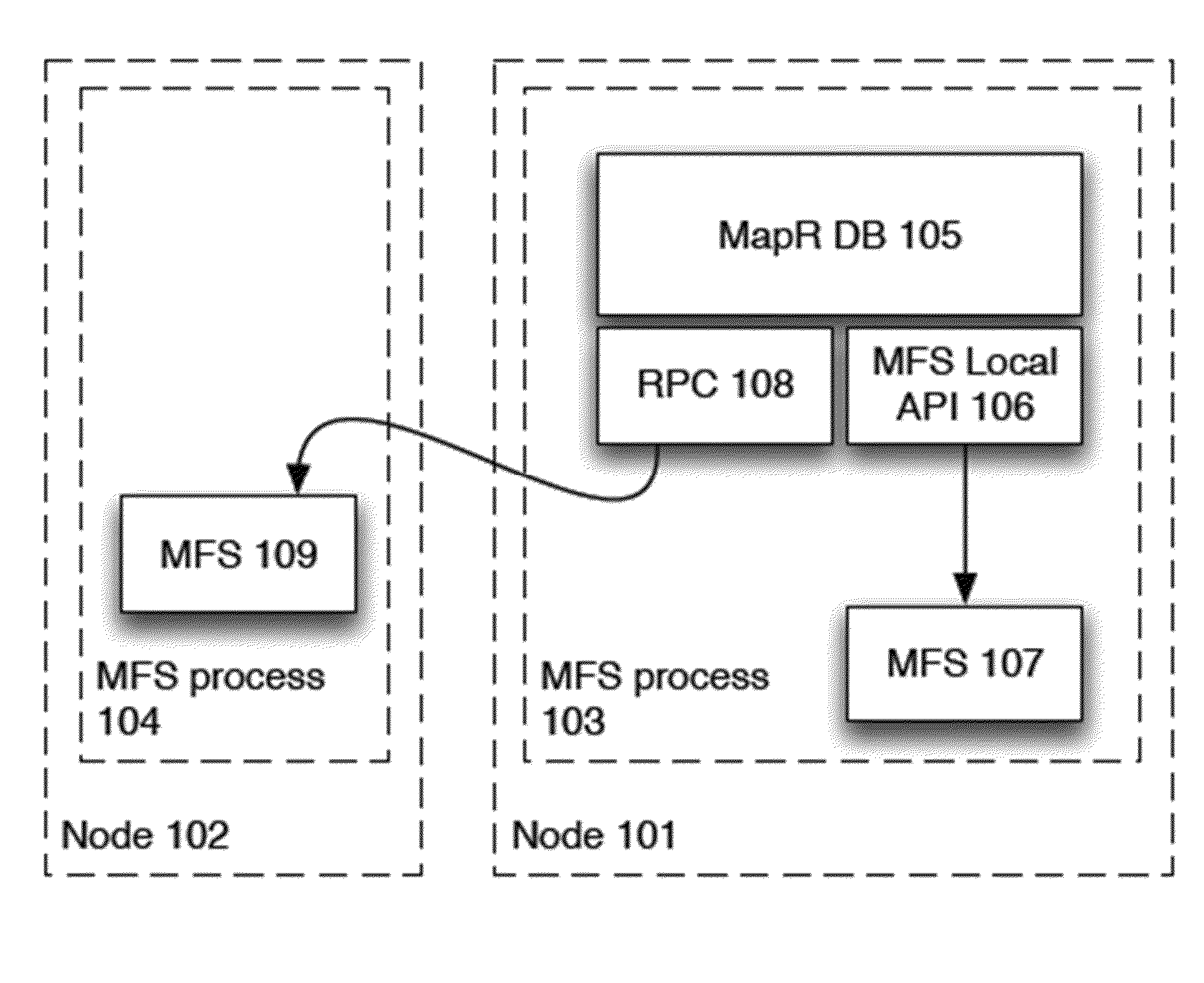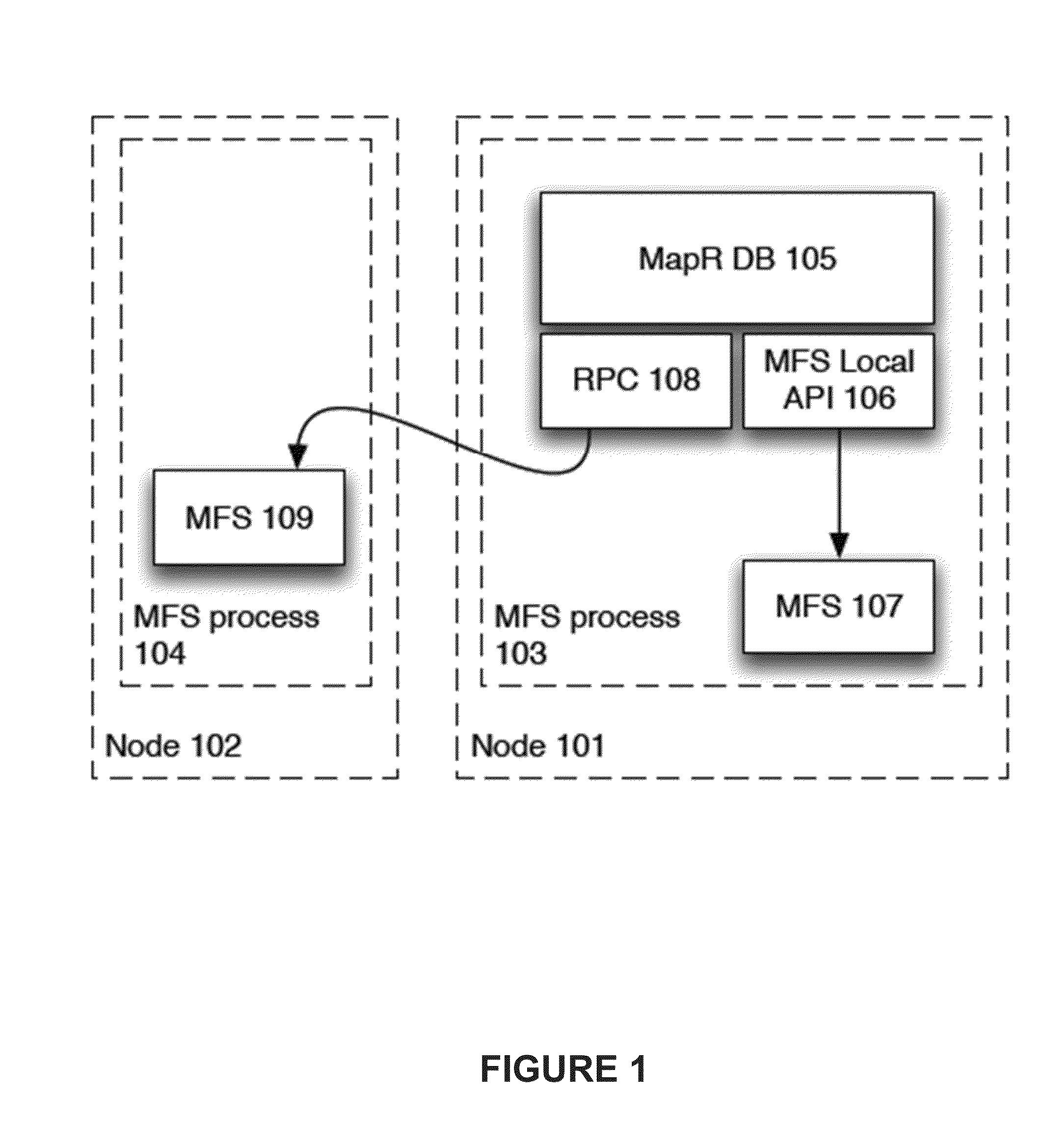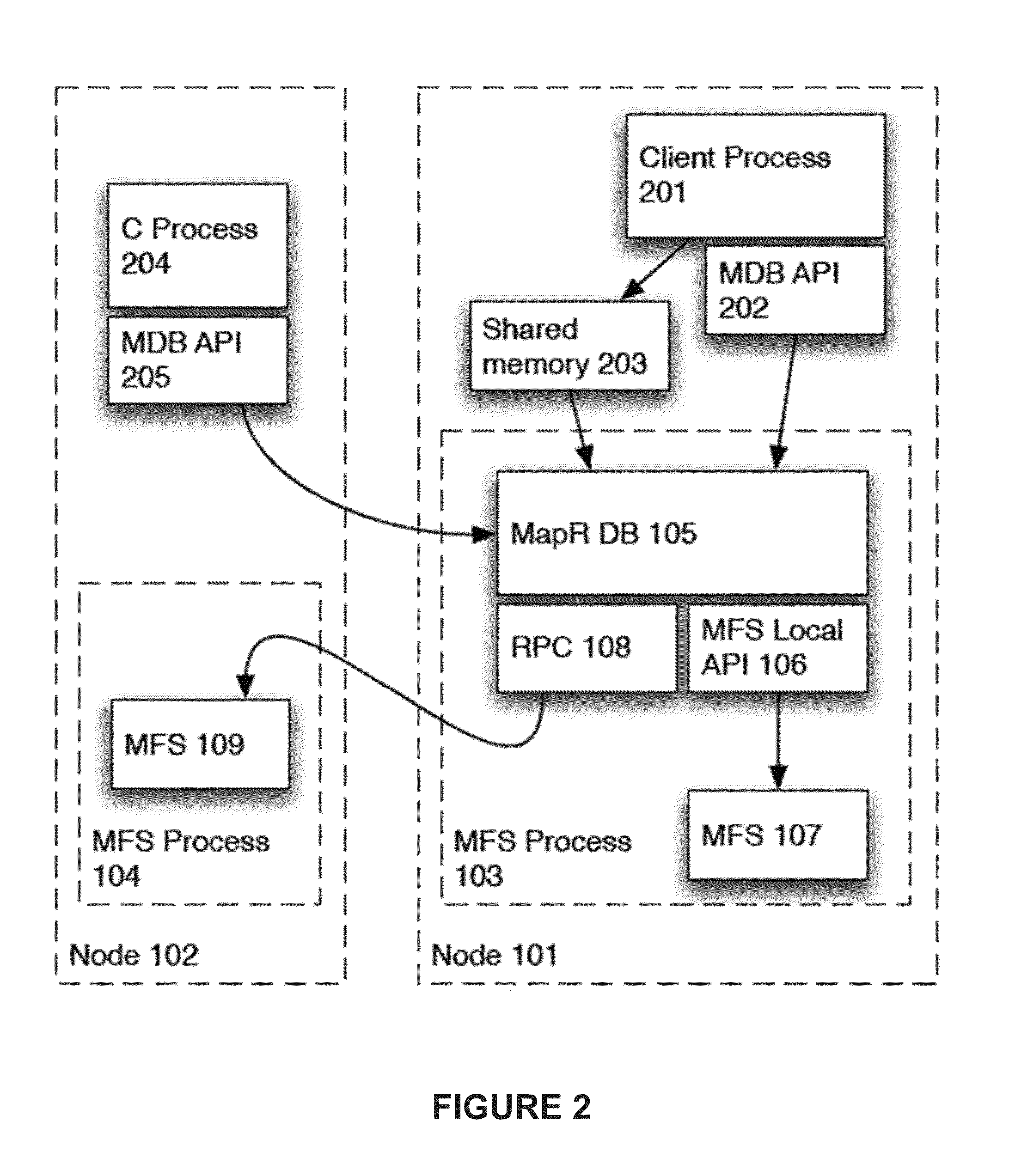Table format for map reduce system
a table format and map technology, applied in the field of computer file systems, can solve the problems of requiring the mutation of the on-disk structure, the inability of hbase to easily synchronize operations with the underlying file system, and the inability to easily synchronize operations, etc., to achieve the effect of facilitating synchronization operations, and reducing the size of each segmen
- Summary
- Abstract
- Description
- Claims
- Application Information
AI Technical Summary
Benefits of technology
Problems solved by technology
Method used
Image
Examples
Embodiment Construction
Communication Between Components
[0032]FIG. 1 shows two computers or nodes 101, 102 that each have a MapR FS or MFS process 103, 104 running. In FIG. 1, the MapR DB (MDB) process is part of the file system stack in a MapR system. It communicates to local MapR fileserver (MFS) components of the file system using a local API or it can communicate with remote MFS components using the normal file client API. This allows MDB components to reside in the same process as the local MFS components or in a separate process as desired. Integrating the MDB component with the MFS into the same process allows faster communication and results in higher overall performance.
[0033]Within the MFS process 103, there are several software components, including the MapR DB 105 and the MFS proper 107. The MapR DB component 105 can communicate with the MFS 107 in the same process using standard procedure calls via the MFS local API 106. The MapR DB 105 can also communicate with an MFS component 109 in another...
PUM
 Login to View More
Login to View More Abstract
Description
Claims
Application Information
 Login to View More
Login to View More - R&D
- Intellectual Property
- Life Sciences
- Materials
- Tech Scout
- Unparalleled Data Quality
- Higher Quality Content
- 60% Fewer Hallucinations
Browse by: Latest US Patents, China's latest patents, Technical Efficacy Thesaurus, Application Domain, Technology Topic, Popular Technical Reports.
© 2025 PatSnap. All rights reserved.Legal|Privacy policy|Modern Slavery Act Transparency Statement|Sitemap|About US| Contact US: help@patsnap.com



